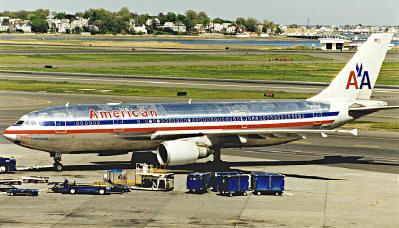Wed, Nov 21, 2012
Requires Modifications To Rudder Control System Or Installation Of Rudder Stops
The FAA has issued an Airworthiness Directive predicated on an incident which occurred 11 years ago. The AD (2012-21-15) applies to all Airbus Model A300 B4-600, B4-600R, and F4-600R series airplanes, and Model A300 C4-605R Variant F airplanes (collectively called A300-600 series airplanes); and Model A310 series airplanes.

According to the FAA, the AD was prompted by "events of excessive rudder pedal inputs and consequent high loads on the vertical stabilizer on several airplanes. This AD requires either incorporating a design change to the rudder control system and/or other systems, or installing a stop rudder inputs warning (SRIW) modification. We are issuing this AD to prevent loads on the vertical stabilizer that exceed ultimate design loads, which could cause failure of the vertical stabilizer and consequent reduced controllability of the airplane."
The event in question was an accident which occurred November 12, 2001, in which the tail of an American Airlines A300-605R came apart shortly after takeoff from JFK airport in New York. The airliner went down in a populated area, resulting in the fatal injury of all 260 people on board the plane, as well as five on the ground.
In its probable cause report, the NTSB said that the cause of the accident was "the in-flight separation of the vertical stabilizer as a result of the loads beyond ultimate design that were created by the first officer's unnecessary and excessive rudder pedal inputs. Contributing to these rudder pedal inputs were characteristics of the Airbus A300-600 rudder system design and elements of the American Airlines Advanced Aircraft Maneuvering Program."
Since the accident, Airbus has issued several service bulletins addressing the issue. The estimated cost of installing a system to warn pilots that they are using excessive rudder forces is between $72,720 and $107,720 per airplane. Installing a system to limit rudder travel would be as high as $195,500 per airliner. The FAA estimates that there are 215 aircraft registered in the U.S. that are affected by the AD. The FAA says that the modifications must be made within 48 months of the AD's effective date of December 14. USA Today reports that Airbus received certification of its proposed warning system in March, but says that there is "no realistic" way that the modifications can be completed within that time frame.
(File image. Not accident airplane)
More News
Airbus Racer Demonstrator Makes Inaugural Flight Airbus Helicopters' ambitious Racer demonstrator has achieved its inaugural flight as part of the Clean Sky 2 initiative, a corners>[...]
A little Bit Quieter, Said Testers, But in the End it's Still a DA40 Diamond Aircraft recently completed a little pilot project with Lufthansa Aviation Training, putting a pair of >[...]
Line Up And Wait (LUAW) Used by ATC to inform a pilot to taxi onto the departure runway to line up and wait. It is not authorization for takeoff. It is used when takeoff clearance >[...]
Contributing To The Accident Was The Pilot’s Use Of Methamphetamine... Analysis: The pilot departed on a local flight to perform low-altitude maneuvers in a nearby desert val>[...]
From 2015 (YouTube Version): Overcoming Obstacles To Achieve Their Dreams… At EAA AirVenture 2015, FedEx arrived with one of their Airbus freight-hauling aircraft and placed>[...]
 Airbus Racer Helicopter Demonstrator First Flight Part of Clean Sky 2 Initiative
Airbus Racer Helicopter Demonstrator First Flight Part of Clean Sky 2 Initiative Diamond's Electric DA40 Finds Fans at Dübendorf
Diamond's Electric DA40 Finds Fans at Dübendorf ANN's Daily Aero-Term (04.23.24): Line Up And Wait (LUAW)
ANN's Daily Aero-Term (04.23.24): Line Up And Wait (LUAW) NTSB Final Report: Extra Flugzeugbau GMBH EA300/L
NTSB Final Report: Extra Flugzeugbau GMBH EA300/L Classic Aero-TV: 'Never Give Up' - Advice From Two of FedEx's Female Captains
Classic Aero-TV: 'Never Give Up' - Advice From Two of FedEx's Female Captains



